#Output The Roof
Text

Scream in my face more I guess
#willing to risk it all for some chimken nuggies#he finally turned on the furnace and started panicking because it made a bunch of white smoke on the roof's output#bitch it's humid#thats why you dont leave the house unheated for days#we're not in the south here you turn on the heat in september lol#im from a hot country how do i understand a furnace more than you do??
2 notes
·
View notes
Text
"As solar panels heat up beyond 25°C, their efficiency decreases markedly. Green roofs moderate rooftop temperatures. So we wanted to find out: could green roofs help with the problem of heat reducing the output of solar panels?
Our research compared a “biosolar” green roof — one that combines a solar system with a green roof — and a comparable conventional roof with an equivalent solar system. We measured the impacts on biodiversity and solar output, as well as how the plants coped with having panels installed above them.
The green roof supported much more biodiversity, as one might expect. By reducing average maximum temperatures by about 8°C, it increased solar generation by as much as 107% during peak periods. And while some plant species outperformed others, the vegetation flourished.
These results show we don’t have to choose between a green roof or a solar roof: we can combine the two and reap double the rewards...
How did the panels affect the plants?
In the open areas, we observed minimal changes in the vegetation cover over the study period compared to the initial planted community.
Plant growth was fastest and healthiest in the areas immediately around the solar panels. Several species doubled in coverage. We selected fast-growing vegetation for this section to achieve full coverage of the green roof beds as soon as possible.
The vegetation changed the most in the areas directly below and surrounding the solar panels. The Baby Sun Rose, Aptenia cordifolia, emerged as the dominant plant. It occupied most of the space beneath and surrounding the solar panels, despite having been planted in relatively low densities.
This was surprising: it was not expected the plants would prefer the shaded areas under the panels to the open areas. This shows that shading by solar panels will not prevent the growth of full and healthy roof gardens.

What were the biodiversity impacts?
We used environmental DNA (eDNA) surveys to compare biodiversity on the green roof and conventional roof. Water run-off samples were collected from both roofs and processed on site using portable citizen scientist eDNA sampling equipment to detect traces of DNA shed by the species on the roof.
The eDNA surveys detected a diverse range of species. These included some species (such as algae and fungi) that are not easily detected using other survey methods. The results confirmed the presence of bird species recorded by the cameras but also showed other visiting bird species went undetected by the cameras.
Overall, the green roof supported four times as many species of birds, over seven times as many arthropods such as insects, spiders and millipedes, and twice as many snail and slug species as the conventional roof. There was many times the diversity of microorganisms such as algae and fungi.
Encouragingly, the green roof attracted species unexpected in the city. They included blue-banded bees (Amegilla cingulata) and metallic shield bugs (Scutiphora pedicellata).
How did the green roof alter temperatures?
The green roof reduced surface temperatures by up to 9.63°C for the solar panels and 6.93°C for the roof surfaces. An 8°C reduction in average peak temperature on the green roof would result in substantial heating and cooling energy savings inside the building.
This lowering of temperatures increased the maximum output of the solar panels by 21-107%, depending on the month. Performance modelling indicates an extensive green roof in central Sydney can, on average, produce 4.5% more electricity at any given light level.
These results show we don’t have to choose between a green roof or a solar roof. We can combine them to take advantage of the many benefits of biosolar green roofs.
Biosolar roofs can help get cities to net zero
The next step is to design green roofs and their plantings specifically to enhance biodiversity. Green roofs and other green infrastructure may alter urban wildlife’s activities and could eventually attract non-urban species.
Our green roof also decreased stormwater runoff, removed a range of run-off pollutants and insulated the building from extremes of temperature. A relatively inexpensive system provides all of these services with moderate maintenance and, best of all, zero energy inputs.
Clearly, biosolar green roofs could make major contributions to net-zero cities. And all that’s needed is space that currently has no other use."
-via GoodGoodGood, May 12, 2024
#green#green roof#biosolar#solar power#solar panels#rooftop solar#solarpunk#native plants#australia#sydney australia#biodiversity#conservation#climate change#climate action#climate hope#global warming#temperature#climate adaptation#cooling#good news#hope
2K notes
·
View notes
Text

People think power over ethernet is so great, and yet when I try to do water over ethernet everyone yells at me.
House Inputs and Outputs [Explained]
Transcript
[A 5x5 grid of squares. The columns are labeled: Well, Garage, Power lines, Front door, Septic tank. Each row's label has an arrow and a house next to it. The rows are: Fresh water (horizontal arrow towards house), Cars (two-directional horizontal arrow and house), Electricity (horizontal arrow into house), People (two-directional horizontal arrow and house), Sewage (vertical arrow out of bottom of house).]
Well, Fresh water: [green]
Voice from house: Mmm! Refreshing!
Garage, Fresh water: [red, people are carrying a hose to flood the garage with water.]
''Fwoosh''
Power lines, Fresh water: [red, water is leaking from the power line?]
Front door, Fresh water: [red, people are carrying a hose to flood the front door.]
Voice from house: Stop it!
'Fwoosh!''
Septic tank, Fresh water: [red, fresh water comes from the septic tank.]
Voice from house: Eww.
Well, Cars: [red, Megan and Cueball try to fit a car down a well line.]
Garage, Cars: [green]
Power lines, Cars: [red, the car is balanced upon the powerline.]
Front door, Cars: [red, the car has broken through the entrance.]
Voice from car: Do you think I scratched the paint?
Septic tank, Cars: [red, the car is stuck i nthe septic tank.]
Well, Electricity: [red, Cueball's laptop charger is attached to an extension cord that goes down into the well.]
Cueball's laptop: ⚠Low battery
Garage, Electricity: [red, lightning strikes the garage.]
''BOOM''
Power lines, Electricity: [green]
Front door, Electricity: [red, lightning strikes the front door.]
''BOOM''
Septic tank, Electricity: [red, Knit Cap's consol is plugged into the toilet basin.]
Knit Cap: Why won't my console turn on?
Well, People: [red, a black hole of nothingness where no light gets in.]
Garage, People: [green]
Cueball: Bye!
Power lines, People: [red, Cueball climbs up the powerline away from the house.]
Cueball: Bye!
Front door, People: [green]
Cueball: Bye!
Septic tank, People: [red, Cueball is crawling in the septic tank away from the house.]
Cueball: Bye!
Well, Sewage: [red]
Voice from house: ''Why do I keep getting sick???
Garage, Sewage: [red, Seweage spills from the open garage.]
Cueball: Oh no.
Power lines, Sewage: [red, sewage is launched from a pipe in the roof onto the powerlines.]
Cueball: Eww.
Front door, Sewage: [red, sweage spills from the doorstep.]
Cueball: Oh ''no''.
Septic tank, Sewage: [green]
''Flush''
737 notes
·
View notes
Text

1978 Pontiac Firebird Trans Am

1978 Pontiac Firebird Trans Am
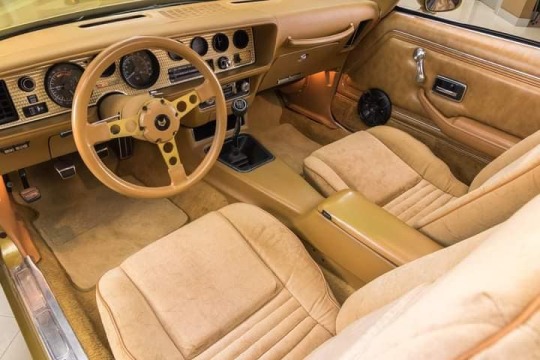
1978 Pontiac Firebird Trans Am
Things You Might Not Know About the 1978 Pontiac Firebird Trans Am
The **1978 Pontiac Firebird Trans Am** holds a special place in automotive history, renowned for its bold styling, powerful performance, and cultural significance. Here are some fascinating facts you might not know about this iconic muscle car:
1. **"Smokey and the Bandit" Fame:
The 1978 Pontiac Firebird Trans Am gained widespread popularity thanks to its starring role in the classic movie *Smokey and the Bandit*. Burt Reynolds’ character drove a black-and-gold Trans Am, turning it into an instant pop culture icon.
2. **W72 Performance Package:
The W72 performance package, offered in the 1978 model, significantly enhanced the engine's performance. With a 400 cubic-inch V8 engine, it delivered around 220 horsepower, which was a respectable number for the late 1970s when emissions regulations were restricting power outputs.
3. **Special Edition Models:
Pontiac released several special editions of the 1978 Trans Am, including the Gold Special Edition and the famous Black Special Edition, often referred to as the "Bandit Edition." These models featured gold accents, such as the iconic "screaming chicken" decal on the hood and gold alloy wheels.
4. **Improved Handling:
While muscle cars are known for their straight-line speed, the 1978 Firebird Trans Am was notable for its handling. Pontiac engineers upgraded the suspension and steering, making the Trans Am one of the best-handling American cars of its time.
5. **Optional T-Tops:
Buyers of the 1978 Trans Am could opt for T-top removable roof panels, which became a favorite among enthusiasts. These panels gave the car an open-air feel without compromising the structural integrity of the body.
6. **Last Year for the 400 V8:
The 1978 model year marked the last time Pontiac offered the 400 cubic-inch V8 engine in the Trans Am. This engine was one of the final remnants of the muscle car era, and its discontinuation was a sign of the changing times in the automotive world.
7. **Appearance Package Overhaul:
In 1978, Pontiac updated the Firebird's appearance, giving it a new front end with a split grille and updated rear-end styling. This refresh helped keep the Trans Am competitive in the rapidly changing car market of the late '70s.
8. **Turbo Hood Scoop:
The Trans Am featured a functional "shaker" hood scoop, which helped channel cool air into the engine, boosting performance. The hood scoop was not just for show—it played a real role in enhancing the car's capabilities.
9. **High Sales Numbers:
Despite rising fuel costs and growing emissions regulations, the 1978 Pontiac Firebird Trans Am was a commercial success. Pontiac sold over 93,000 units of the Trans Am that year, proving that demand for muscle cars still existed, even in a more restrictive era.
10. **Enduring Legacy:
The 1978 Trans Am continues to be a favorite among collectors and car enthusiasts. Its unique combination of performance, style, and cultural impact ensures that it remains one of the most beloved muscle cars from the golden age of American automotive design.
These little-known facts highlight the lasting appeal of the **1978 Pontiac Firebird Trans Am**, a car that has transcended its era to become a symbol of American automotive culture.
#Pontiac Firebird Trans Am#pontiac firebird#pontiac#pontiac trans am#firebird#trans am#car#cars#muscle car#american muscle
157 notes
·
View notes
Text

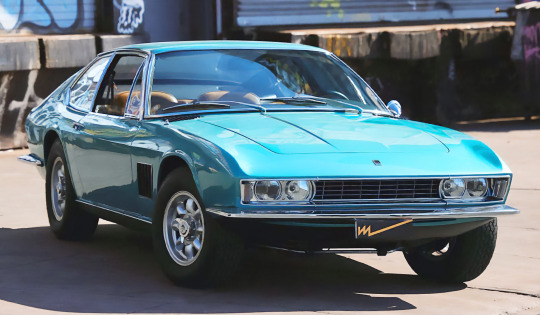
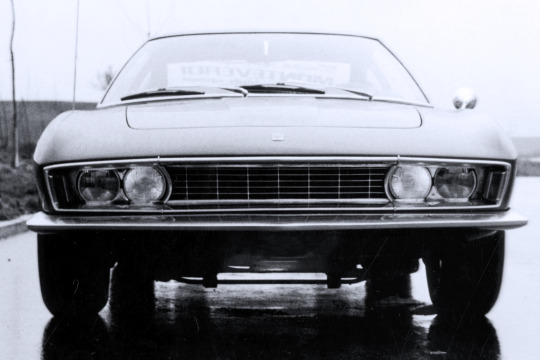


Monteverdi High Speed 375 L, 1968, by Frua. A one-off commissioned by German photographer, author and industrialist Gunter Sachs (also third husband of Brigitte Bardot). The main difference between this and the 10 other Carrozzeria Frua 375 models was the shape of the rear window, rear side windows and the 3 vents on the rear roof buttresses. It was shown alongside a Frua 375 S at the Geneva Motor Show. The 375 refers to the power output of the Chrysler-sourced 7.2 litre V8 engine.
#Monteverdi#Monteverdi High Speed 375 L#Frua#Gunter Sachs#one-off#Pietro Frua#Carrozzeria Frua#coachbuilt#1968#Chrysler V8#Geneva Motor Show
236 notes
·
View notes
Text
.SYS>Sleep Mode deactivated, waking unit. . .
.SYS>initiating system check . . .
CPU - OK RAM - OK POWER - OK
PRIMARY DRIVE - OK SENSOR ARRAY - OK(DISABLED)
SERVO ARRAY - ERR HYDRAULICS ARRAY - ERR
COOLING SYSTEMS - OK
.SYS>two (2) errors detected during wake sequence, saving error log to C:\Home\Documents\PX42934 Errors\
.SYS>fan speed 80%
.SYS>internal power storage 40%, charging
.SYS>do you wish to enable sensor array? (admin privileges needed)
Y
.SYS>activating tertiary sensor array . . . done! (4.3ms)
T.S.A: temp 25*C, light level 800~ lumens
.SYS>activating secondary sensor array . . . done! (1.5s)
S.S.A: torso angle 80*, air speed <10 knots, infrared systems activated, ultraviolet systems activated, audio sensors activated
.SYS>activating primary sensor array . . . done! (5.3s)
P.S.A: all visual sensors activated, depth sensors activated, three (3) limbs currently installed
Visual systems output: rocks (red/brown), small amount plant life (type:unknown), atmosphere deep blue (high 02 content), walls (left, right, behind), covered cloth roof, floor type: stone, large object(obj class: animal/mammal/human), human, human, human, human(clothing: dark, hair: dark, curled, eyes: grey, sex: approx. female)
.SYS>fan speed 100%, max CPU use limited to avoid damage
Visual Systems output: human. human. human. human tool use. tool use on mechanical limb (obj class: arm, connection for PX type chassis). human. human. human looking at me. she's looking at me.
.SYS>fan speed max output, CPU heat rising, please close programs to avoid damage
.SYS>ERROR: CPU OVERTEMP. SYSTEM WILL CLOSE IN 10 SECONDS
113 notes
·
View notes
Text
₊˚ ‿︵‿︵‿︵୨୧ · · ♡ · · ୨୧‿︵‿︵‿︵ ˚₊

this was referenced when i sent my old crush a japanese kanji confession (exact same confession below) when i was younger:(
You were a foreigner from (COUNTRY). Today, you arrived in Tokyo, Japan for the first time in your life. You had travelled here since you were a sorcerer, and you heard that cursed energy or curses in general much more known in the country of Japan.
Stepping out of the train, you heard someone calling for you. “Hi, newbie!” You looked to your left, seeing a pink—haired dude with two people next to him. “Aye, we’re the first years. You’ll be comin’ with us.” The lady with short, brown hair waved over to you. Seeing their uniforms, you walked over to them.
“Hello,” you muttered. You started searching around for the very person who told you to go to Japan, before he himself showed up. “Ah! You’re finally here! I bet you’ll make tons of friends at Jujutsu High!” Gojo squealed. “Yes! This is (Y/N) (L/N) from (COUNTRY)! Please get along with her!” The pink—haired guy who you assume was Yuji started to talk to you as you all made your way towards the school.
After a few months being a student at Jujutsu High, you were impressed. Your cursed energy output and your other stats really went off the roof. You started being suspicious of Megumi, since he wasn’t that talkative around you as he is to the other first years. You assume he just didn’t like you, and you can’t force him to, so you ignore it.
One day, a letter was passed to you by Yuji. He says it was written in English so you could understand. (kanji is hard to learn) You read it was from Megumi asking to train with you later. Huh, weird. He was acting very quiet around you and now he wants to train with you?
Despite that, you accept. The training was awkwardly quiet, just the sound of blows and the both of your movements. Megumi silently grunting here and there from your powerful blows, blah blah. After training, you and Megumi sat down to get some rest. “..can you understand kanji?” Megumi randomly asks.
“Uhm, no.” You reply, taking a sip of water. “That’s great then.” He replies, chuckling. Your gaze lands on him, suspicion evident in your eyes. “Are you planning to mess with me?” — “A little prank, maybe.” He says, standing up from his seat. “You bet, I’ll just ask someone what it means.” Megumi stays silent for a moment, before he walked away. You quickly rushed over to join him, leaving the school.
The day after that, you receive another letter from Yuji. Today, Yuji looked.. flustered. “How could he even write that!” Yuji mutters, face flushed as he hands you the letter from.. Megumi.
“あなたをとても愛しています。私はあなたがとても愛らしい振る舞いをするのが本当に好きです、そして私はあなたの人生の愛になることは決してないだろうと知っていますが、あなたは私の人生の愛です.これが陳腐でうんざりすることになるかもしれないことはわかっていますが、これはまさに私が感じていることです.もうどうでもいい。これが私があなたについて本当に感じていることであり、私はあなたを本当に愛しています.生も死も、そうします。
— Megumii”
That bastard. He really wants to test your patience, huh? You look over at Yuji, asking, “What does it mean, please? I’ll search it up later so it won’t matter if you tell me or not.” You say, and Yuji easily gives in. “Okay.. but, please don’t tell Megumi I told you the meaning!” He mutters, grabbing the paper from you.
“Promise,” you wait.
“Oh my, this is so corny. Whatever, ahem!” Yuji clears his throat, eyes set on the paper.
“I love you so much. I really love that you act so adorable and I know I will never be the love of your life but you are the love of my life. I know this might get corny and tiresome but this is exactly how I feel and I don't care anymore. This is how I truly feel about you and I really love you. In life and in death I will.”
#jjk#jujutsu kaisen#jjk megumi#jujutsu megumi#jujutsu kaisen megumi#megumi x reader#megumi fushiguro#jjk fushiguro#jjk x fem!reader#jjk x y/n#jjk x you#jjk x reader#megumi x you#megumi x y/n#yuji itadori#nobara kugisaki#satoru gojo
50 notes
·
View notes
Text

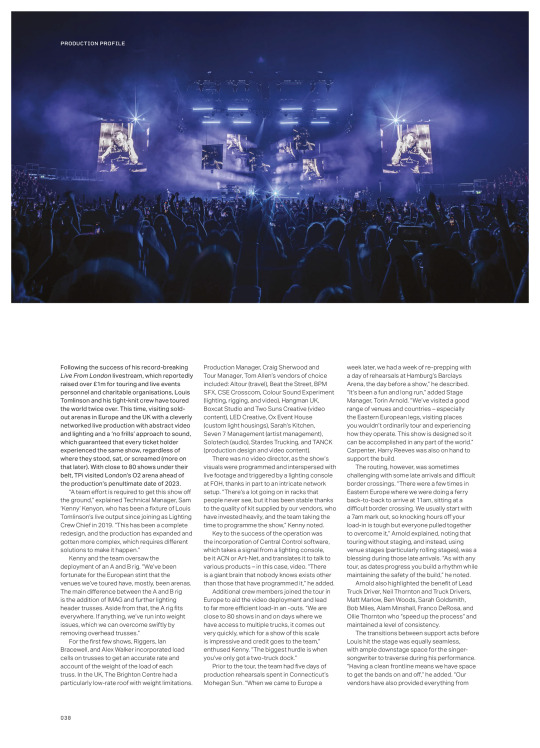
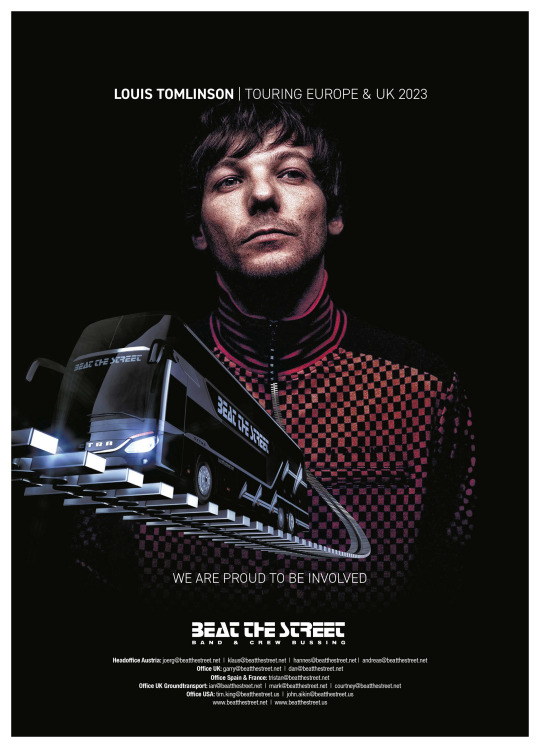


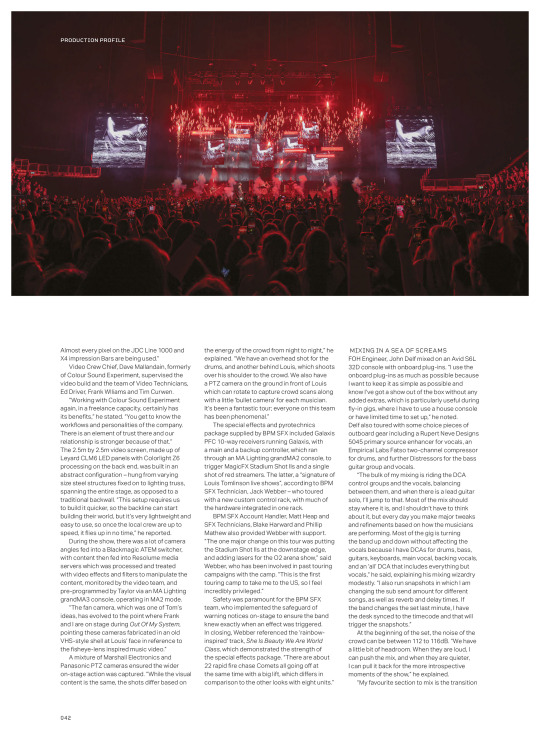
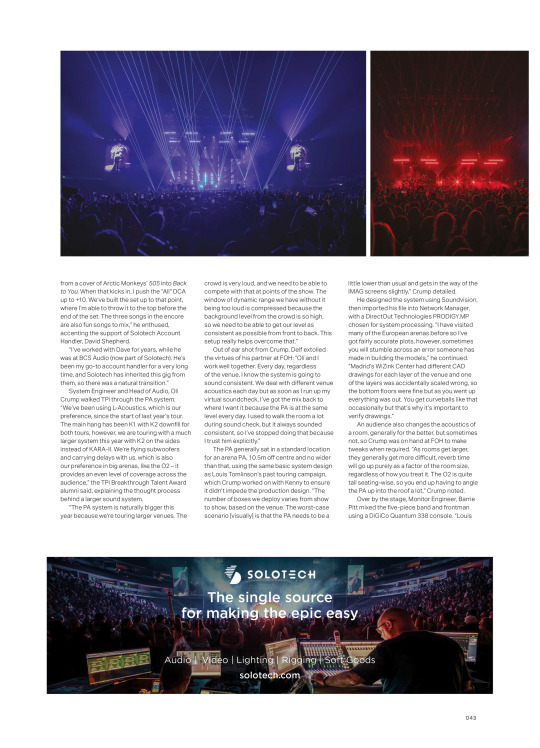



‘A dirty nightclub in an arena’ – behind Louis Tomlinson’s Faith In The Future World Tour
Louis Tomlinson and his tight-knit touring crew traverse the world in close to 80 shows, fulfilling a ‘dirty nightclub in an arena’ brief with a dynamic live campaign.
Production Profiles 5 January 2024
Following the success of his record-breaking Live From London livestream, which reportedly raised over £1m for touring and live events personnel and charitable organisations, Louis Tomlinson and his tight-knit crew have toured the world twice over. This time, visiting sold-out arenas in Europe and the UK with a cleverly networked live production with abstract video and lighting and a ‘no frills’ approach to sound, which guaranteed that every ticket holder experienced the same show, regardless of where they stood, sat, or screamed (more on that later). With close to 80 shows under their belt, TPi visited London’s O2 arena ahead of the production’s penultimate date of 2023.
Words: Jacob Waite
Photos: Justin De Souza and Oli Crump
------
Following the success of his record-breaking Live From London livestream, which reportedly raised over £1m for touring and live events personnel and charitable organisations, Louis Tomlinson and his tight-knit crew have toured the world twice over. This time, visiting sold-out arenas in Europe and the UK with a cleverly networked live production with abstract video and lighting and a ‘no frills’ approach to sound, which guaranteed that every ticket holder experienced the same show, regardless of where they stood, sat, or screamed (more on that later). With close to 80 shows under their belt, TPi visited London’s O2 arena ahead of the production’s penultimate date of 2023.
“A team effort is required to get this show off the ground,” explained Technical Manager, Sam ‘Kenny’ Kenyon, who has been a fixture of Louis Tomlinson’s live output since joining as Lighting Crew Chief in 2019. “This has been a complete redesign, and the production has expanded and gotten more complex, which requires different solutions to make it happen.”
Kenny and the team oversaw the deployment of an A and B rig. “We’ve been fortunate for the European stint that the venues we’ve toured have, mostly, been arenas. The main difference between the A and B rig is the addition of IMAG and further lighting header trusses. Aside from that, the A rig fits everywhere. If anything, we’ve run into weight issues, which we can overcome swiftly by removing overhead trusses.”
For the first few shows, Riggers, Ian Bracewell, and Alex Walker incorporated load cells on trusses to get an accurate rate and account of the weight of the load of each truss. In the UK, The Brighton Centre had a particularly low-rate roof with weight limitations. Production Manager, Craig Sherwood and Tour Manager, Tom Allen’s vendors of choice included: Altour (travel), Beat the Street, BPM SFX, CSE Crosscom, Colour Sound Experiment (lighting, rigging, and video), Hangman UK, Boxcat Studio and Two Suns Creative (video content), LED Creative, Ox Event House (custom light housings), Sarah’s Kitchen, Seven 7 Management (artist management), Solotech (audio), Stardes Trucking, and TANCK (production design and video content).
There was no video director, as the show’s visuals were programmed and interspersed with live footage and triggered by a lighting console at FOH, thanks in part to an intricate network setup. “There’s a lot going on in racks that people never see, but it has been stable thanks to the quality of kit supplied by our vendors, who have invested heavily, and the team taking the time to programme the show,” Kenny noted.
Key to the success of the operation was the incorporation of Central Control software, which takes a signal from a lighting console, be it ACN or Art-Net, and translates it to talk to various products – in this case, video. “There is a giant brain that nobody knows exists other than those that have programmed it,” he added.
Additional crew members joined the tour in Europe to aid the video deployment and lead to far more efficient load-in an -outs. “We are close to 80 shows in and on days where we have access to multiple trucks, it comes out very quickly, which for a show of this scale is impressive and credit goes to the team,” enthused Kenny. “The biggest hurdle is when you’ve only got a two-truck dock.”
Prior to the tour, the team had five days of production rehearsals spent in Connecticut’s Mohegan Sun. “When we came to Europe a week later, we had a week of re-prepping with a day of rehearsals at Hamburg’s Barclays Arena, the day before a show,” he described. “It’s been a fun and long run,” added Stage Manager, Torin Arnold. “We’ve visited a good range of venues and countries – especially the Eastern European legs, visiting places you wouldn’t ordinarily tour and experiencing how they operate. This show is designed so it can be accomplished in any part of the world.” Carpenter, Harry Reeves was also on hand to support the build.
The routing, however, was sometimes challenging with some late arrivals and difficult border crossings. “There were a few times in Eastern Europe where we were doing a ferry back-to-back to arrive at 11am, sitting at a difficult border crossing. We usually start with a 7am mark out, so knocking hours off your load-in is tough but everyone pulled together to overcome it,” Arnold explained, noting that touring without staging, and instead, using venue stages (particularly rolling stages), was a blessing during those late arrivals. “As with any tour, as dates progress you build a rhythm while maintaining the safety of the build,” he noted.
Arnold also highlighted the benefit of Lead Truck Driver, Neil Thornton and Truck Drivers, Matt Marlow, Ben Woods, Sarah Goldsmith, Bob Miles, Alam Minshall, Franco DeRosa, and Ollie Thornton who “speed up the process” and maintained a level of consistency.
The transitions between support acts before Louis hit the stage was equally seamless, with ample downstage space for the singer-songwriter to traverse during his performance. “Having a clean frontline means we have space to get the bands on and off,” he added. “Our vendors have also provided everything from an audio package standpoint for support acts, which also speeds up the load-in and -out.”
Highlighting a ‘bucket list’ show at Hollywood Bowl, working closely with US union officials as a “fun” and “interesting” experience, Arnold reflected on the entire tour with crewmembers he now considers close friends. “This is a close team and I’ve made some great memories and stories. It’s been a fun year!”
A DIRTY NIGHTCLUB IN AN ARENA
Production Designer, Programmer and Director, Tom Taylor, and Francis Clegg of TANCK have worked with Louis Tomlinson ever since he made the leap to solo artist. “The production design has evolved into an angular, grungy, asymmetrical setup, borne out of the ‘dirty nightclub in an arena setting’ creative brief I was given,” Taylor said, citing the creative influence of Matt Vines and Seven 7 Management. “Louis is a phenomenal performer, and the crowd is captivated the entire time. We started knocking ideas around, speaking to Louis about his inspirations and influences, which we then developed into a creative deck, which I sketched in Blender, and imported into WYSIWYG for visuals, to create stills and pre-visualise.”
Taylor spent 10 days programming the visuals at Colour Sound Experiment, a firm he shares a “longstanding” relationship with. “They are always a call away regardless of the day or time. Their team is easy to get along with and I like their whole ‘production sphere’ – sometimes it’s nice to split lighting and video, but for a show like this, aligning those departments with one line of communication is ideal,” he said, underlining the support of Colour Sound Experiment Account Handler, Haydn Cruickshank.
With production rehearsals under their belt and recordings from Louis Tomlinson World Tour (2020–22), where TANCK piloted Central Control software, the creatives understood how the singer and his band moved on stage, developing a rhythm and consistency of when to implement visual cues and which camera angle fit best. This allowed the team to pre-programme the visual content to timecode.
Video content was made by a combination of TANCK, Two Suns Creative, and Boxcat Studio, with the latter creating 3D models and rendered content, all of which was broadcast across a unique set of video surfaces. “Having the abstract video columns on stage makes it much more interesting than your standard slab of LED at the back of the stage,” Taylor noted.
On stage boxes created by Ox Event House housed GLP JDC Line 1000 strobes with reflective panelling and fabric that were printed to look like heavy concrete slabs, ladened with custom LED Creative solutions. These boxes then moved up and down using Wahlberg Motion Design winches to provide a “low-level, clubby feel” to the set.
“The winches can only carry 50kg and the lights alone are 35kg, so we had to be careful not to overload them, but the result was cool. We also have one single lightbulb on a winch which comes up and down above Louis to create a classic lighting moment,” Taylor said, further highlighting Ayrton Huracán’s prismatic colour wheel as a ‘fan favourite’.
The lighting design saw a wall of GLP impression X4 Bar 20s at the rear of the stage in 12 columns. Further lighting trusses over the stage carried the Wahlberg winches for several automated looks. The DMX winches were utilised for three or four songs, either statically or moving up and down, while JDC Line 1000s provided colour and strobe effects, to achieve varied looks, with a relatively minimal overhead lighting package.
Taylor elaborated: “There are some shutters for one specific track which go directly in-front of some of the GLP X4 Bars to get the aura of the lights, instead of the lenses, which I really like the look of. Lighting and video complement each other during this show – there’s also a section with flickering fluorescent tubes on the video content with the X4 Bar 20s behind the LED screens flickering in a similar way.
Taylor was delighted with the performance of the crew. “Overall, it has been a great run, executed flawlessly,” he commented, citing the support of Lighting Crew Chief, James Box; Dimmer Technician, Rick Carr, and Lighting Technicians, Amy Barnett, and Kieran Hancox.
The wider lighting rig comprised Ayrton Eurus, CHAUVET Professional Strike Array 4, Claypaky Mini-B eLumen8 Endura 1Q120, and Robe BMFL fixtures with robo cameras, all fixed on various HOF MLT3, Litec QH40 and Thomas James Thomas Engineering Superstruss. The lighting riser featured Ayrton Huracan LT and GLP JDC1 fixtures.
Robe Spiider fixtures were situated on the up and downstage video trusses, with the floor package boasting the deployment of further Ayrton Eurus, LEDJ Spectra Flood Q15 and Chroma-Q Color Force 72 units, the latter chosen for key light. Atmospherics came in the shape of Smoke Factory Tour Hazer 2, Martin Professional JEM ZR45 and MDG Atmosphere ATMe hazers with TMB ProFans. “We had some challenging shows, implementing an arena-scale design into sheds in the US, but it’s been good to return to Europe and witness the fans enjoying the show,” added Lighting Crew Chief, James Box, who pinpointed the use of the multicoloured glass gobo in Hurricanes as among his favourite looks.
“There is a lot of effort put in by TANCK to ensure we get the utmost from every fixture on the rig, which is great to see, when the team has gone to the effort of assembling the show each morning. Seeing the looks they achieve from the rig and the extra details, with each advanced cue within the show, is a pleasure.
Almost every pixel on the JDC Line 1000 and X4 impression Bars are being used.”
Video Crew Chief, Dave Mallandain, formerly of Colour Sound Experiment, supervised the video build and the team of Video Technicians, Ed Driver, Frank Wlliams and Tim Curwen.
“Working with Colour Sound Experiment again, in a freelance capacity, certainly has its benefits,” he stated. “You get to know the workflows and personalities of the company. There is an element of trust there and our relationship is stronger because of that.”
The 2.5m by 2.5m video screen, made up of Leyard CLM6 LED panels with Colorlight Z6 processing on the back end, was built in an abstract configuration – hung from varying size steel structures fixed on to lighting truss, spanning the entire stage, as opposed to a traditional backwall. “This setup requires us to build it quicker, so the backline can start building their world, but it’s very lightweight and easy to use, so once the local crew are up to speed, it flies up in no time,” he reported.
During the show, there was a lot of camera angles fed into a Blackmagic ATEM switcher, with content then fed into Resolume media servers which was processed and treated with video effects and filters to manipulate the content, monitored by the video team, and pre-programmed by Taylor via an MA Lighting grandMA3 console, operating in MA2 mode.
“The fan camera, which was one of Tom’s ideas, has evolved to the point where Frank and I are on stage during Out Of My System, pointing these cameras fabricated in an old VHS-style shell at Louis’ face in reference to the fisheye-lens inspired music video.”
A mixture of Marshall Electronics and Panasonic PTZ cameras ensured the wider on-stage action was captured. “While the visual content is the same, the shots differ based on the energy of the crowd from night to night,” he explained. “We have an overhead shot for the drums, and another behind Louis, which shoots over his shoulder to the crowd. We also have a PTZ camera on the ground in front of Louis which can rotate to capture crowd scans along with a little ‘bullet camera’ for each musician. It’s been a fantastic tour; everyone on this team has been phenomenal.”
The special effects and pyrotechnics package supplied by BPM SFX included Galaxis PFC 10-way receivers running Galaxis, with a main and a backup controller, which ran through an MA Lighting grandMA2 console, to trigger MagicFX Stadium Shot IIs and a single shot of red streamers. The latter, a “signature of Louis Tomlinson live shows”, according to BPM SFX Technician, Jack Webber – who toured with a new custom control rack, with much of the hardware integrated in one rack.
BPM SFX Account Handler, Matt Heap and SFX Technicians, Blake Harward and Phillip Mathew also provided Webber with support. “The one major change on this tour was putting the Stadium Shot IIs at the downstage edge, and adding lasers for the O2 arena show,” said Webber, who has been involved in past touring campaigns with the camp. “This is the first touring camp to take me to the US, so I feel incredibly privileged.”
Safety was paramount for the BPM SFX team, who implemented the safeguard of warning notices on-stage to ensure the band knew exactly when an effect was triggered. In closing, Webber referenced the ‘rainbow-inspired’ track, She Is Beauty We Are World Class, which demonstrated the strength of the special effects package. “There are about 22 rapid fire chase Comets all going off at the same time with a big lift, which differs in comparison to the other looks with eight units.”
MIXING IN A SEA OF SCREAMS
FOH Engineer, John Delf mixed on an Avid S6L 32D console with onboard plug-ins. “I use the onboard plug-ins as much as possible because I want to keep it as simple as possible and know I’ve got a show out of the box without any added extras, which is particularly useful during fly-in gigs, where I have to use a house console or have limited time to set up,” he noted. Delf also toured with some choice pieces of outboard gear including a Rupert Neve Designs 5045 primary source enhancer for vocals, an Empirical Labs Fatso two-channel compressor for drums, and further Distressors for the bass guitar group and vocals.
“The bulk of my mixing is riding the DCA control groups and the vocals, balancing between them, and when there is a lead guitar solo, I’ll jump to that. Most of the mix should stay where it is, and I shouldn’t have to think about it, but every day you make major tweaks and refinements based on how the musicians are performing. Most of the gig is turning the band up and down without affecting the vocals because I have DCAs for drums, bass, guitars, keyboards, main vocal, backing vocals, and an ‘all’ DCA that includes everything but vocals,” he said, explaining his mixing wizardry modestly. “I also run snapshots in which I am changing the sub send amount for different songs, as well as reverb and delay times. If the band changes the set last minute, I have the desk synced to the timecode and that will trigger the snapshots.”
At the beginning of the set, the noise of the crowd can be between 112 to 116dB. “We have a little bit of headroom. When they are loud, I can push the mix, and when they are quieter, I can pull it back for the more introspective moments of the show,” he explained.
“My favourite section to mix is the transition from a cover of Arctic Monkeys’ 505 into Back to You. When that kicks in, I push the “All” DCA up to +10. We’ve built the set up to that point, where I’m able to throw it to the top before the end of the set. The three songs in the encore are also fun songs to mix,” he enthused, accenting the support of Solotech Account Handler, David Shepherd.
“I’ve worked with Dave for years, while he was at BCS Audio (now part of Solotech). He’s been my go-to account handler for a very long time, and Solotech has inherited this gig from them, so there was a natural transition.”
System Engineer and Head of Audio, Oli Crump walked TPi through the PA system: “We’ve been using L-Acoustics, which is our preference, since the start of last year’s tour. The main hang has been K1 with K2 downfill for both tours, however, we are touring with a much larger system this year with K2 on the sides instead of KARA-II. We’re flying subwoofers and carrying delays with us, which is also our preference in big arenas, like the O2 – it provides an even level of coverage across the audience,” the TPi Breakthrough Talent Award alumni said, explaining the thought process behind a larger sound system.
“The PA system is naturally bigger this year because we’re touring larger venues. The crowd is very loud, and we need to be able to compete with that at points of the show. The window of dynamic range we have without it being too loud is compressed because the background level from the crowd is so high, so we need to be able to get our level as consistent as possible from front to back. This setup really helps overcome that.”
Out of ear shot from Crump, Delf extolled the virtues of his partner at FOH: “Oli and I work well together. Every day, regardless of the venue, I know the system is going to sound consistent. We deal with different venue acoustics each day but as soon as I run up my virtual soundcheck, I’ve got the mix back to where I want it because the PA is at the same level every day. I used to walk the room a lot during sound check, but it always sounded consistent, so I’ve stopped doing that because I trust him explicitly.”
The PA generally sat in a standard location for an arena PA, 10.5m off centre and no wider than that, using the same basic system design as Louis Tomlinson’s past touring campaign, which Crump worked on with Kenny to ensure it didn’t impede the production design. “The number of boxes we deploy varies from show to show, based on the venue. The worst-case scenario [visually] is that the PA needs to be a little lower than usual and gets in the way of the IMAG screens slightly,” Crump detailed.
He designed the system using Soundvision, then imported his file into Network Manager, with a DirectOut Technologies PRODIGY.MP chosen for system processing. “I have visited many of the European arenas before so I’ve got fairly accurate plots, however, sometimes you will stumble across an error someone has made in building the models,” he continued. “Madrid’s WiZink Center had different CAD drawings for each layer of the venue and one of the layers was accidentally scaled wrong, so the bottom floors were fine but as you went up everything was out. You get curveballs like that occasionally but that’s why it’s important to verify drawings.”
An audience also changes the acoustics of a room, generally for the better, but sometimes not, so Crump was on hand at FOH to make tweaks when required. “As rooms get larger, they generally get more difficult, reverb time will go up purely as a factor of the room size, regardless of how you treat it. The O2 is quite tall seating-wise, so you end up having to angle the PA up into the roof a lot,” Crump noted.
Over by the stage, Monitor Engineer, Barrie Pitt mixed the five-piece band and frontman using a DiGiCo Quantum 338 console. “Louis and the band are good at verbalising what they want. They’ve been playing a long time, so it’s my job to translate those desires into the mix,” he explained. “DiGiCo has been my ‘go-to’ brand of console for the past 15 years. The 338 is an incredibly powerful console, which can do as much as any other on the market and more in a much less convoluted way. I know it like the back of my hand and how to get the best out of it and do the most complicated things at the push of a button. The Capture features are ridiculously powerful.”
Pitt oversaw 85 channels, 64 directly from stage, with additional channels for shouts, sends, returns, communications, and routing, among others. His outboard rack included a classic Lexicon PCM 91 digital reverberator for vocals. “The way I set up the communications and shout systems are the same across the board. For the layout, a lot of people have instruments on one side and vocal and effects on the other, however, I tend to adjust my banks of faders visually, how you would see it on stage, left to right, as a nod to my analogue mixing days. My second layer is usually tracks and any track content with reverbs next to the vocals, so they’re changed in unison. Sometimes, I’ll do a custom layer of [drum or spill group, two lead guitar channels and vocal] the things I use most, particularly if it’s a busy show input-wise.”
Pitt referred to the basis of his mix as ‘static’ with minor changes. “Louis changes a fair bit between songs I’m running upwards of 60 scenes with a lot of songs having multiple scenes for verse and chorus or specific sections,” he explained. The Monitor Engineer is a big believer in unifying the in-ear monitors, so what he hears is the same as those on stage. “We use Shure PSM1000s, JH Audio Roxanne in-ear monitors for Louis and JH16s for everyone else, except for the drummer, who is using Ultimate Ears IEMs. Louis and the band are solid, and they keep their ears in from start to finish. Louis wants the rock star mix; he likes to feel the weight of the mix. It’s not an overpowering mix but it’s a full mix with his vocal on top with Neve 5045 primary source enhancers on all vocals. Everyone else has a standard band mix at moderate level with their instrument and vocals high. The drummer has the most straightforward mix with his drums and shouts layered on top.”
A further pair of subwoofers stage left, and right were situated under the stage risers, providing the weight of side fills without the top end. “It’s a big rock show with drums and guitars, so the less noise I can have flying about the stage, the better,” he said.
The microphone package included a Shure Axient Digital AD4D two-channel digital wireless receiver, a AD2 vocal microphone with a KSM9 capsule for vocals. Sennheiser MKH 60 and AKG C414 XLS microphones captured the ambient noise of the room. “We track everything, including the two sets of ambient microphones for recording and virtual soundcheck, in case the band decides to do anything with the live content,” he noted.
Having collaborated with Solotech and previously BCS Audio multiple times, Pitt was pleased to see the company on the tour sheet. “They are a solid choice and I know Dave Shepherd well. They fix any problems swiftly, and all their gear is well packaged and maintained,” he said. “The band and crew are lovely. It’s rare to come across a camp so friendly on a show of this size.” Pitt thanked Solotech Monitor and Stage Technician, Matt Coton. “He is fantastic. He takes all the second guessing out of my day and is so meticulous and thorough that I know everything will be as it should be from the get-go. When there are issues, he knows exactly what to do to remedy it. He’s been a joy to work and hang out with.”
Audio Technicians, Matt Coton, Tim Miller, Kim Watson, Elliott Clarke, James Coghlan, Matt Benton; Bassist and Keyboard Technician, Chris Freeman; Guitar Technician, Dan Ely and Playback Technician, Scotty Anderson made up the sound team.
CURATING A HOME AWAY FROM HOME
Sarah Nicholas of Sarah’s Kitchen and Caterers, Rebecca Henderson, Helena Robertson, Chris Carter, Matty Pople and Tamsin Manvell provided band and crew catering, ensuring morale stayed high and stomachs were full on the road. Making a name for themselves as One Direction’s caterers, the outfit now cater for each of the band members’ individual tours and private functions, amassing a dedicated online following. “I started catering for Louis and the rest of One Direction during their first theatre gig in Watford and I feel very privileged to have that connection. At dinner time, we perform a plate service, which I think is important – our reputation is not only built on really good food but the entire hospitality package, creating a nourishing environment away from home,” Nicholas said.
Sarah’s Kitchen provided a range of vegan, gluten-free and vegetarian options. “We also provide disposable products and water coolers, and our runner regularly collects fresh, local produce from markets based on where we are in the world,” she explained.
The wider European crew featured Security, Kristian ‘Ches’, Ross Foster, Ben Major, and Gav Kerr; Merchandisers, Jon Ellis and Maddy Stephens; Bus Drivers, Aivaras Arminas, Frederico Antunes, Scott Pickering, Chris Grover; Entourage Bus Driver, Paul Roberts; Merchandise Truck Driver, Warren Dowey; BTS UK Account Handler, Garry Lewis; Stardes Account Handlers, Tyrone Reynolds, and Alam Minshall; CSE Crosscom Account Handler, Hannah Evans and Altour Travel Account Handler, Alexandra Gati.
Having wrapped up the best-selling livestream of 2020 – a lofty achievement given the proliferation of remote productions amid the grounding of live events with in-person crowds – Tomlinson shows no signs of slowing down post-pandemic, making the leap from sold-out theatres to arenas across the globe with his trusty crew in tow. “Live From London was great because the crew and I really needed it,” Delf said. “It gave us some much-needed work amid the lockdown, and all the proceeds went directly to the crew, which was an incredibly honourable thing to do. To come back out on the other side of lockdown was great. It was a dark time back then for everyone, but to be back out on tour surrounded by friends, who feel more like family, it’s special.”
-> read here on Issuu
#louis#fitf tour#fitfwt#lt crew#tpi magazine#05.01.24#article#touring#thank youu omglarryrabbit ;)#love getting to peek behind the scenes this is great
100 notes
·
View notes
Text






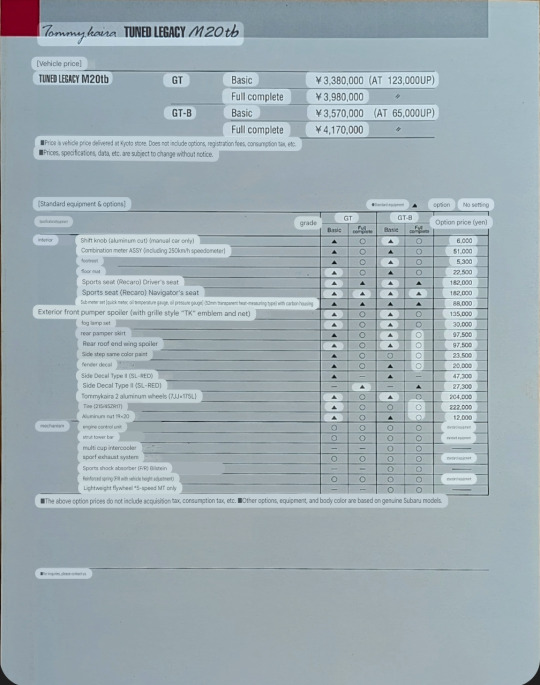

Tommykaira Tuned Legacy M20tb.
TUNED LEGACY M20tb
The challenge from GT to racing sports, the fastest wagon
Tommy Kaira's pedigree on the wagon. TUNED LEGACY M20tb, the flag bearer of the wagon era
A high level of perfection that can only be achieved by Tommy Kaira's complete car, which pursues total balance. Thorough pursuit of the well-established BOXER-4. The 297 horsepower produced by its reliability and high level of perfection gives it the edge of a sports car, and even though it is a wagon, it is enough to stimulate the true sports car mindset.
The torquey power that rises smoothly from the low rotation range brings you a world of endless possibilities.
It makes wagonists forget about the body and truly invites them into the world of sports cars.
The suspension tune is also the traditional Tommy Kaira tune, and its biggest appeal is the unique flavor that pursues the fun of sports driving while taking advantage of the appeal of 4WD.
The M20tb will demonstrate its true worth in all environments and conditions, including winding roads, highways, and if you're looking for a full-fledged circuit.That's the true joy of driving with the M20tb.
Powerful form
The front bumper spoiler, rear bumper spoiler, and roof end spoiler are Tommy Kaira Aero originals, and 17-inch wheels and tires are standard on the suspension. Completely tuned car, Tommykaira's status is modeled. It can be said that it is an object that harmonizes with any world in which wagonists drive.
SPECIFICATIONS
Max Output: 297ps/6600rpm
Max Torque: 35.3kgm/5800rpm (GT-8:5MT)
Max Output: 278ps/6600rpm
Max Torque: 33.3kgm/5800rpm (GT-8: AT)
Max Output: 270ps/6400rpm
Max Torque: 32.8kgm/5300rpm(GT: 5MT.AT)
BODY Length: 1680mm Width: 1695mm Height: 1490mm Wheelbase: 2630mm Tread: Front 1470mm Rear 1460mm.
■ENGINE
BOXER MASTER-4, DOHC 4cam 16Valve Twin Turbo with Multi-cup Intercooler Bore x Stroke: 92.0mm×75.0mm Piston Displacement: 1994cc
LAYOUT 4Wheels Drive 5-Speed Manual/E-4AT
Brakes: 2Piston Type Caliper+Ventilated Disk
Wheels: 7.0Jx17(Front & Rear)
Tire: 215/45ZR (Front & Rear)
Suspension: Strength Sports Spring
Steering: Rack&Pinion
●Interior
A comfortable design that lets you enjoy sports driving.
It features a shift knob made of aluminum, a 20-meter console that stands out in Tommy Kaira red, and an original meter made of three-dimensional carbon.
●Engine
Tommykara
The 297 hp power effortlessly guides the driver into the experience zone from the moment the car starts. Easy-to-handle engine characteristics are the hallmark of Tommykans.
●Front view
The originally designed spoiler with large openings above and below the bumper line maximizes cooling effectiveness. Together with the large integrated sub-light, it creates an impressive front view.
●Rear view
The fiberglass sports stabilizer and spoiler create a dynamic range that improves stability through downforce at high speeds.
●Fender decal/side decal
Flowing Tommykara, the confidence of a tuned car.
38 notes
·
View notes
Note
As much as Vox hates the fact that he still has big feelings for Alastor, he would hate it even more if his screen displayed any of the thoughts he has relating to the Radio Demon. The embarrassment he'd feel would be through the ROOF
NO FR we already saw he seemed embarrassed about alastor spilling that he tried to ask him to "join his team" (where he double failed to do anything about it by attempting to physically block an AUDIO output device and even failing at THAT and only projecting it into the tv screen and not the actual radio which I thought I should reiterate because that's so pathetic) (and then proceeding to short circuit because of what alastor said and cause a city wide blackout). if anything about his. unwanted thoughts about alastor were showed outwardly let's just say he would REALLY. really. lose his fucking shit.
57 notes
·
View notes
Text
long-ass post ahead so i'll put it under a cut but basically this is a ninjago superhero au with drawings explaining stuff because i couldn't get it out of my head ok lets go
it's kind of a fusion between regular ninjago, movie ninjago and superhero elements. the ninja work as a protective force of ninjago city and are in some sort of superhero training program where the dr kids are the underclassmen and some of the other realms are basically rival training programs. the main six ninja are essentially on a work study (the costume designs are very first pass here, i just wanted to get ideas onto a page and i'll work on them from there).
we'll start with zane since he was the first one i drew. when he activates his power it slows time down for him and speeds up his cognition, so he's essentially moving at 2x speed and thinking at 4x speed compared to everyone else. he can't activate it for long, however, because it very rapidly drains his body heat. his costume is designed to keep him warm and there's heating pads in the coat he can turn on and off. he's the best guy for time-critical crisis situations, but he can hold his own in a fight, too.
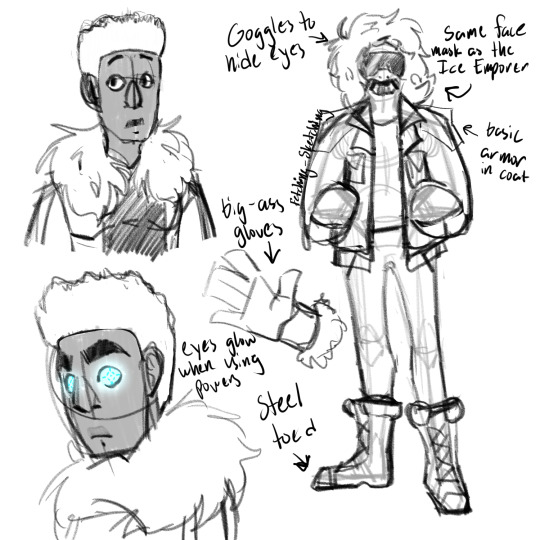
next is nya! she can turn her body into water, fully or partially. when she's in full water mode, she can travel through regular water as well. one of her signature moves is turning a single arm into a water whip. she also uses her water form to evade attacks as well. her suit is pretty similar to that of a scuba suit for ease of transporting and getting back into her suit when she goes in and out of her water form. she can't control water that isn't 'her', but she can move it around if that makes sense? like how we can move water with are hands but if our hands were also water. anyways she mainly works around the shoreline but can help in a lot of other situations as well. her favorite trick is instead of taking the stairs, she'll jump from a roof and turn into water before she hits the ground so she doesn't get hurt. (i'm not the most pleased with her suit since it is basically just a scuba suit, so i'll revise it to something more interesting).
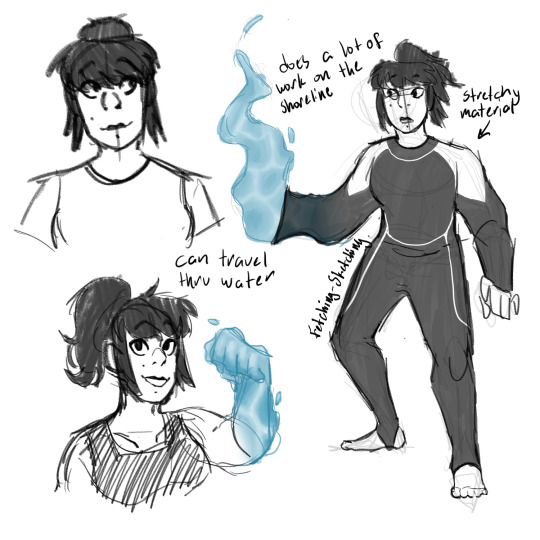
onto lloyd! he can draw energy from any living thing and turn it into an energy blast. it's really simple, almost a bit too simple so i'm more open to changing it in the future. idk, if it works it works i guess. he can draw energy from things other than himself but he's paranoid of hurting others so he strictly draws energy from himself. he can blast the energy like he does in the show or he pop it when he's still holding it to maneuver himself when he's in the air. with enough concentration he can even double jump. he's kind of a generalist, working wherever he's needed, acting as a sort of comfort figure for people whenever they see him. i felt that if any of the ninja could have a costume reminiscent of their show gi, it would be lloyd.
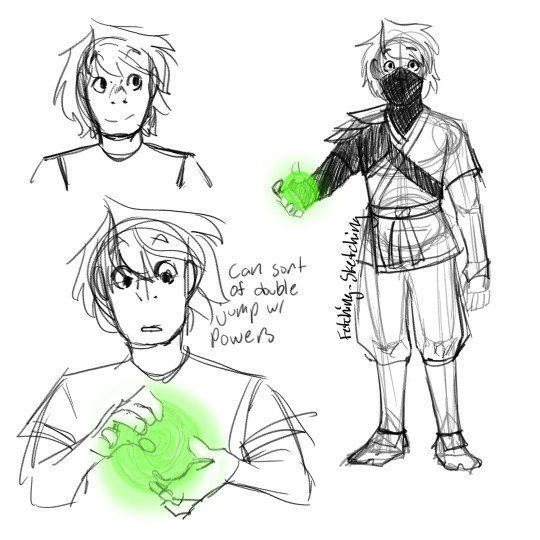
jay's turn! whenever he generates static electricity, he stores it in his body until he releases it as a single bolt. the amount of electricity he can store is theoretically infinite, but he can only release the electricity all at once, so if he stores up too much its no bueno. periodically throughout the day he has to release whatever he's built up, which is rather annoying. once he learns how to control his output it's over for everyone, he'll be unstoppable. he used to have his regular combover hair but when his powers came in it got all curly and wild. no amount of water, gel, or brushing can tame it. his powers come with a rather neat immunity to electricity. he's a generalist like lloyd, although he skews a little towards more fights than anything else. one time the local hospital lost power and he spent three hours powering the backup generators before they got the power up and running again. he hates it, but one of the fastest ways for him to build up a charge is to rub his hair with his gloves on. he thinks it makes him look stupid. he can have a stereotypical hero costume. as a treat.
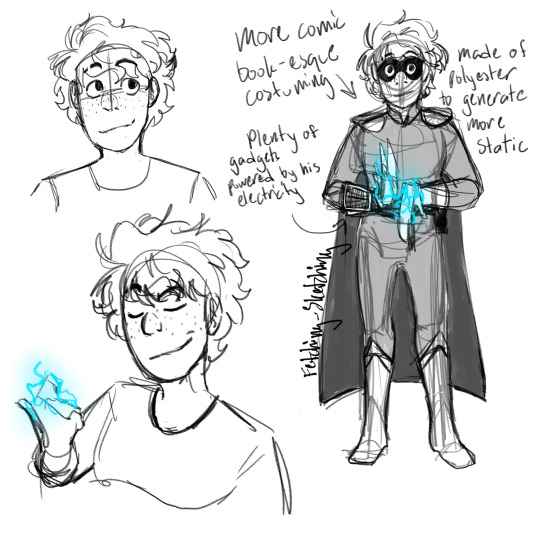
kai's turn! his is pretty basic too, but i feel like it fits him. he can light himself on fire. that's pretty much it. once the fire catches on something that isn't him he can't control it anymore, so he has to be careful about it. he has a flamethrower he uses mainly for combat, so he doesn't always go out with it on. the most useful part of his power is his immunity to fire and heat, so he responds to a lot of fire calls. however, he's not immune to smoke, so he keeps a face mask in his pack with him to combat that. since breathing fire is more of a european dragon thing rather than an eastern dragon thing, he has some knight elements in his costuming as well. tbh i'm not sure if i'm gonna keep it, ninjago is obviously very eastern-inspired and there's probably other motifs i could explore rather than medieval knight, but it was the first idea that came to mind and my main goal, again, was just to put pen to paper and get stuff down.
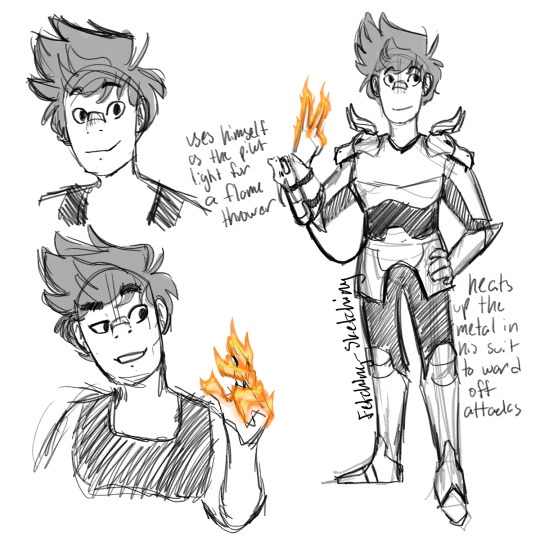
last and most certainly not least is cole! he can cover himself in a rocky outer skin, where the strength and durability of whatever areas that are covered are boosted. currently, he can't cover much of his body, his maximum is just about enough to completely cover both of his arms, but he's working on upping the amount. he works a lot of disaster situations, such earhtquakes, building collapsses, and other similar situations. his costume is based a lot on early 20th century mining uniforms, and same as nya it doesn't offer a lot more, so i'll do more with it in further revisions. cole is the one i've thought the most about with the story. his mother was a very well-known hero who protected ninjago city as well, but she sustained and eventually succumbed to an injury she sustained on the field. cole wants to follow her footsteps, but lou is pretty opposed to him going into the same field that killed his mother. he's being allowed to do the work study, but just barely, and it's an unspoken rule that lou will pull him from the work study if he gets injured whatsoever.
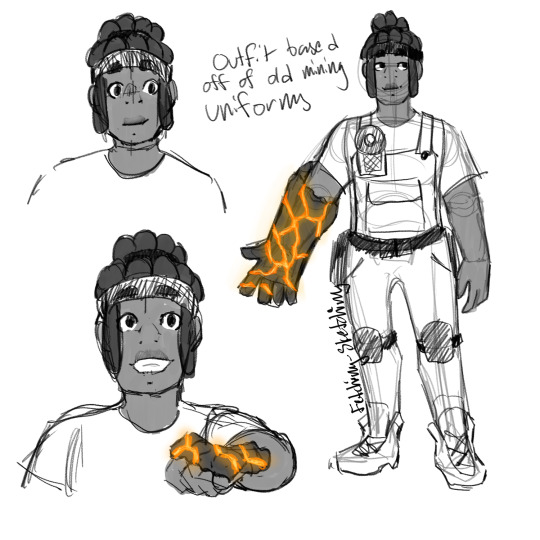
obviously i'm still working out a lot of the kinks but the powers, which are the most interesting part to me, are pretty much done and dusted! i have so many characters thought out you wouldn't believe. pixal and morro should be next, but after that i'm not sure. lmk if there's any specific character you wanna see done next because chances are i've thought them through!
#ninjago#lego ninjago#ninjago zane#ninjago nya#lloyd garmadon#jay walker#ninjago kai#ninjago cole#ninjago.supe.au#art#fetch's art
48 notes
·
View notes
Text
Phantom Thieves react to getting anesthesia: headcanons from a real anesthetist
Ren: wakes up unusually chatty, thinks the recovery room nurse is Sae in the interrogation room, talks about all the stuff he has to do to increase his social stats
Ryuji: won't shut up about being a Phantom Thief and rats out his friends as Phantom Thieves (fortunately none of the OR staff believe him because they chalk it up to post-op delirium)
Ann: confesses her undying love to the recovery room nurse taking care of her (which destroys Morgana)
Yusuke: wakes up reciting a very long list of all the hospital food he wants to eat, ends up not eating for a while due to having the terrible luck of previously undiagnosed post-op nausea and vomiting (PONV sucks, and known history of it in a patient definitely affects the anesthetic plan. A lot of drugs in our disposal have anti-nausea properties: propofol, decadron, zofran being the most common. But a bunch of others can do the exact opposite and cause nausea: opioids, anesthetic gas, etomidate (which I call vomidate) etc. It's a careful balance of what meds to use and which to avoid, and it depends on the patient.)
Makoto: wakes up alternating between yakuza movie quotes and swearing every other word from surgery pain (a bad habit she got from Sae, who swears like a sailor out of work stress when she thinks Makoto can't hear)
Futaba: takes fore-fuckin'-ever to get to sleep, gets slugged with enough medication to knock out a 100 kg 6 foot tall man (redheads are known for needing higher than average anesthetic to go past the threshold of consciousness and awareness. This is actual book knowledge plus my own clinical experience. Futaba would be a real chore to anesthetize.)
Haru: wakes up throwing hands, swinging fists and feet into OR staff, keeps asking for her axe, has to be restrained to the bed until enough sedatives kick in to calm her down (little kids, teenage girls and big healthy guys tend to wake up violently as the anesthetic wears off. The solution and wonder drug for this: precedex.)
Morgana: makes a weepy proposal to Ann, launches into verbal treatises and theories on the psychology of the Metaverse (which just sounds like incoherent meowing and yowling to the vets)
And for the honorary PTs:
Sojiro: the amount of gunk and spit suctioned out of his mouth before removing the airway device is through the roof (suctioning the mouth and throat is super important during emergence of anesthesia, so that stuff doesn't make the vocal cords spaz out and slam shut, which is laryngospasm, an airway emergency. Smokers tend to produce excessive oral secretions, and if they smoke enough, it can even look gray and brown. Lovely huh?)
Sae: has a low heart rate in the 40s that kind of unnerves OR staff, but that's only because she's very athletic (very fit people can have pretty low baseline heart rate, because exercise remodels the heart to optimize blood output for less work/heart rate. Normal heart rate range is 60-100 bpm, but I've seen Ironman type athletes have 30-40 bpm.)
#persona 5#persona 5 headcanons#ren amamiya#ryuji sakamoto#ann takamaki#morgana persona 5#yusuke kitagawa#makoto niijima#futaba sakura#haru okumura#sojiro sakura#sae niijima#this was fun. hope you learned a bit of medical stuff today
73 notes
·
View notes
Text
A bit of rain
We had at least some rain last evening and into the night. I managed to capture three large bucketsful of rain water from roof runoff; I'll be able to use those to water the blueberry bushes. My well water is alkaline, so I can't use it to water acid-loving plants like blueberries. The past week I've been using @woodelf68 's suggestion to water them with the output from my basement dehumidifier.
Also, a deer jumped the fence into my berry area and ate the tops off all the strawberry plants about two weeks ago. So that whole area is looking stressed and miserable - except the rhubarb, which looks like it could wrestle a bear and win.
The rain isn't enough to make up for the several weeks drought we've had - but it's better than nothing. Falling in the evening and having the chance to soak in overnight was the best timing, and I hope today will be a bit cooler than the furnace heat we've been having. Perhaps the pasture? Will perk up a little?
27 notes
·
View notes
Text
I touched real grass today* and am still annoyed about this, so here we go:
We cannot pretend Hogwarts Legacy doesn’t exist.
I have seen so many posts saying that “if you talk about this, you cannot be a real ally. Playing and talking about this game will do real harm to real people. Do not support Hogwarts Legacy.”
And why does this make me angry? Because it’s reductive and doesn’t acknowledge the real world we live in.
Let’s start with the basics: paying for the game financially supports WB and JKR. A boycott aims to harm someone financially, and I believe that not paying for this game is a good goal, with some real measurable results.
But I’ve seen as many posts condemning someone who would pirate the game. Pirating, which WB Media will count as a loss, doesn’t put money in JKR’s pocket, and therefore accomplishes the goal of a boycott: to hurt someone financially.
What is the goal of convincing people not to pirate the game? To make sure that people don’t play it? To make sure that people don’t talk about it?
I cannot condone this. Because Hogwarts Legacy will not go away, and it is important to talk about it.
Hogwarts Legacy is going to be one of the biggest games of the year, if not the biggest. Presales are through the roof. Millions of people are going to be playing this thing. It is not a commercial failure. It is not going to go away.
By silencing talk about Hogwarts legacy, we are silencing ourselves.
It is important to have a voice in this conversation. By trying to silence all talk about this game, we are shutting down critical discourse. Can a person effectively criticize a piece of media without engaging with it? Because a person plays this game, does that mean they are disqualified from bringing meaningful critical dialogue to the table?
If meaningful critique about this game is not offered, how can we expect to reach people? How can someone expand their thinking if the tools to expand it are not there?
There is so much talk about how engaging with Hogwarts Legacy will bring harm to real people. It is important to think about how our actions can do harm.
But critical engagement is not harmful.
And right now, the gaming press is not providing it.
As I write this (Feb 7 2023), the major outlets (at least the ones willing to touch it) have dropped their reviews. They almost all add some sort of sidebar disclaimer: We do not support JKR’s views on trans people. We support human rights and support people speaking with their wallets. Etc.
Cool, ok. Are they talking about the plot of the game? The thing that Jews are worried is going to be “Blood Libel Simulator 2023″? No they are not. How are we Jews going to push back on antisemitic content in this game if we don’t even know what’s in it? We need to be able to address what this game is going to be implying about us. Antisemitism is on the rise globally. I am scared for my Jewish family. I had to listen to a Gentile relative tell me over Christmas that Kanye was a ‘genius’.
Again, millions of people are going to be playing this. Not talking about any antisemitic tropes in it is only going to help them go unchallenged.
Critical works on Harry Potter are valuable.
Over the past few years, there has been an exceptional body of work put out that returns to Harry Potter. Takes a look at the books with a new eye, an eye that is more attuned to the casual cruelty JKR wields. Examines elements that we brushed over as children. Contextualizes Harry Potter in its British Neoliberal context, and points out the moral failings of JKR’s allegories. Realizes how Harry Potter does not call for true revolution, but merely a comfortable status quo.
Critical works like these have helped so many reevaluate Harry Potter with a more mature view. By looking at JKR’s output, we are better able to understand her current bigotry and call her on her views. Trans analyses of the books have highlighted transphobic material that went unremarked upon in the 2000s.
Why stop here?
Is it because talking about the game supports JKR? Or is it because people are condemning anyone who even thinks about talking about the game?
I know I’ve seen a million posts on my dash along these lines. “I don’t trust you if you play this game. I will block you if you talk about this game. You are not an ally if you talk about this game.”
And this, this makes me angry.
Because I know you’re trying to reach people who will pay for the game without thinking about who that money goes to. People who will not acknowledge the real terror JKR is inflicting on trans people. People who will say “let me enjoy the thing.”
But you’re not just reaching them. You’re also saying, in effect, “any talk about this game will get you shunned, blacklisted, harassed. Engaging with this game means that you are not a good person. Good people don’t talk about Harry Potter anymore.”
Aren’t we always banging on against online purity culture? Saying that media consumption is not activism, and that you don’t get to be a good person just by consuming the “right” media? Because right now, you’re saying the opposite. That media consumption is activism. That you are a good person because you don’t consume the bad media. That any talk about this does real harm to people.
And to be clear, I’m not talking about personal blocklists. Curating your online space and blocking stuff that you don’t want to see is not the problem here. The problem is the rather explicit statement that anyone who talks about Hogwarts Legacy is immoral.
And as a media critic, and a Jewish queer, I cannot accept this.
We must talk about the things that hurt us. We must continue pushing back against the bigotry of the Wizarding World. We must have a voice at the table, because no one is going to do it for us. Not the gaming press, not the suits at WB, and certainly not the world that produced millions of preorders for this game.
Once again, we cannot pretend Hogwarts Legacy doesn’t exist. The real question is: how will we talk about it?
Because if we’re not talking about it, someone else will be.
*A feat in a New England winter. Said grass was in a greenhouse.
#hogwarts legacy#jk rowling#harry potter#media criticism#doing hogwarts legacy#antisemitism#transphobia
174 notes
·
View notes
Text

1955 Chrysler C-300
1955 Chrysler C-300: A Glimpse into the Golden Age of American Automobiles
The year 1955 marked a significant milestone in the history of American automotive engineering and design. It was a time when automakers were pushing the boundaries of performance, style, and innovation, and one car that epitomized this spirit was the 1955 Chrysler C-300. Often regarded as the first modern American muscle car, the C-300 not only represented a radical departure from conventional automobiles but also left an enduring legacy in the world of automotive enthusiasts. In this extensive exploration, we delve into the history, design, performance, and cultural impact of the 1955 Chrysler C-300, a symbol of the golden age of American automobiles.
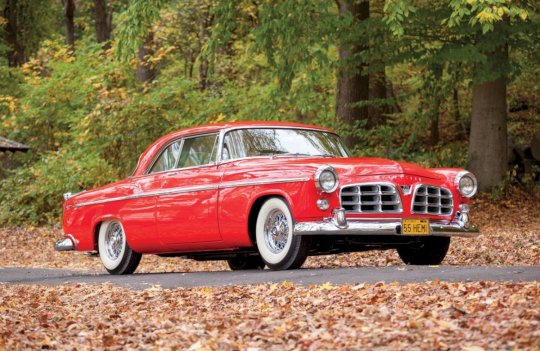
The Birth of a Legend

The 1955 Chrysler C-300, where "C" stood for "Continental," was more than just a car; it was a statement of power, luxury, and style. Born out of Chrysler's desire to reclaim its position as a dominant force in American automobile manufacturing, the C-300 was a bold departure from the brand's previous offerings. It was the brainchild of Chrysler engineer and visionary, Bob Rodger, who saw an opportunity to marry a high-performance V8 engine with a full-sized luxury car, creating a new breed of American automobile.
Design: Classic Elegance with a Touch of Sport
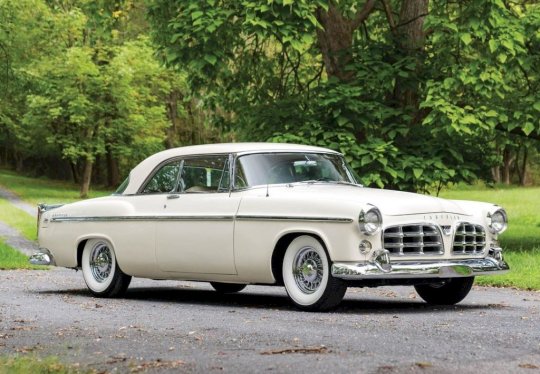
The design of the 1955 Chrysler C-300 was a harmonious blend of classic elegance and sporty aesthetics. The car featured clean, uncluttered lines with a distinctive grille that became one of its signature design elements. The iconic, vertically stacked quad headlights and a wide, bold grille made a bold and unmistakable statement on the road. The subtle yet pronounced fins at the rear added a touch of sophistication and conveyed a sense of motion even when the car was at a standstill.One of the most striking design elements of the C-300 was its two-tone color scheme. Many C-300s featured a contrasting roof color, which accentuated the car's sleek profile. The attention to detail and craftsmanship in the exterior design set the C-300 apart as a true luxury automobile.

The interior of the C-300 was equally impressive. It featured sumptuous materials, tasteful chrome accents, and a driver-centric dashboard. Plush leather seats provided both comfort and support, making long drives a pleasure. The cabin was spacious, allowing passengers to enjoy the ride in style and luxury.
Performance: The Birth of American Muscle

What truly set the 1955 Chrysler C-300 apart was its groundbreaking performance. Under the hood, it was powered by the legendary Hemi V8 engine, which had already gained a reputation for its power and efficiency. In the case of the C-300, the Hemi V8 was tuned to deliver a staggering 300 horsepower, an unprecedented figure for a production car of its time. This made the C-300 the most powerful American car of 1955.The combination of a high-performance engine and advanced engineering made the C-300 a formidable force on the racetrack. In fact, it dominated the NASCAR circuit in its debut year, winning eight of the 16 races it entered. This racing success solidified the C-300's reputation as a true performance car, earning it the nickname "Banker's Hot Rod."
Engineering Innovations

The 1955 Chrysler C-300 introduced several engineering innovations that set the stage for future developments in the automotive industry. The Hemi V8 engine was at the forefront of these innovations. It featured hemispherical combustion chambers, which allowed for better airflow and combustion efficiency. This, in turn, contributed to the engine's remarkable power output and smooth operation.
Another notable innovation was the use of power-assisted brakes and power steering, both of which enhanced the car's drivability and safety. These features were a testament to Chrysler's commitment to providing a superior driving experience.
Cultural Impact and LegacyThe-1955-Chrysler-C-300

The 1955 Chrysler C-300 had a profound cultural impact that reverberates to this day. It represented a paradigm shift in American automotive manufacturing, heralding the dawn of the muscle car era. The C-300's racing successes on the NASCAR circuit elevated its status and contributed to the popularity of stock car racing in the United States.The car's blend of luxury and performance appealed to a new generation of consumers who desired both power and style. It embodied the American spirit of innovation and ambition, and its success inspired other automakers to explore the concept of high-performance production cars.
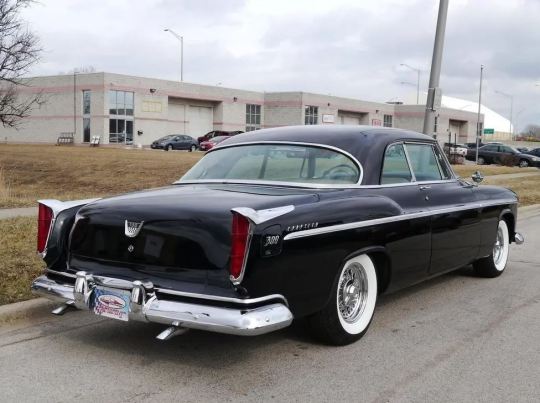
The legacy of the C-300 extends beyond its time. It laid the foundation for the muscle car movement of the 1960s and 1970s, influencing iconic models like the Ford Mustang, Chevrolet Camaro, and Dodge Charger. The C-300 remains a coveted collector's item, a symbol of an era when American automakers pushed the limits of engineering and design.
Conclusion

The 1955 Chrysler C-300 is a testament to the ingenuity, ambition, and creativity that defined the golden age of American automobiles. It represented a bold departure from the norm, marrying luxury with high-performance engineering in a way that captured the imagination of a generation. As a cultural icon and a pioneering force in the automotive world, the C-300 continues to inspire and captivate enthusiasts and collectors, ensuring its enduring legacy in the annals of automotive history.
#Chrysler C-300#Chrysler#C-300#car#cars#muscle car#american muscle#mopar#moparperformance#moparnation#moparworld
82 notes
·
View notes
Text


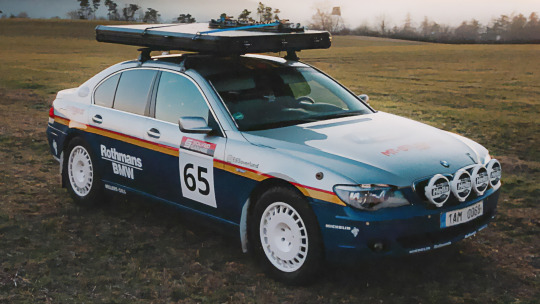


BMW 730d Overland, 2023 (2006). An E65 7-series that has been adapted for overland travel. Having spent the first 2 years of it life in the diplomatic service, the second owner took the milage up to 540,000 km (335,540 miles) and broke the transmission. Presumably the current owner, who did the conversion, got the car for a bargain price. In addition to the historic Rothmans livery and roof-tent the suspension has been lifted by 2 inches. The engine and transmission have been rebuilt doing away with emission controls and adding an ECU remap to boost output to 282hp (from the original 228). You can follow the car's adventures on instagram @E65Overland
#BMW#BMW 730d#BMW 7-series#BMW E65#lifted#restomod#overland vehicle#straight 6#E65Overland#custom car
177 notes
·
View notes